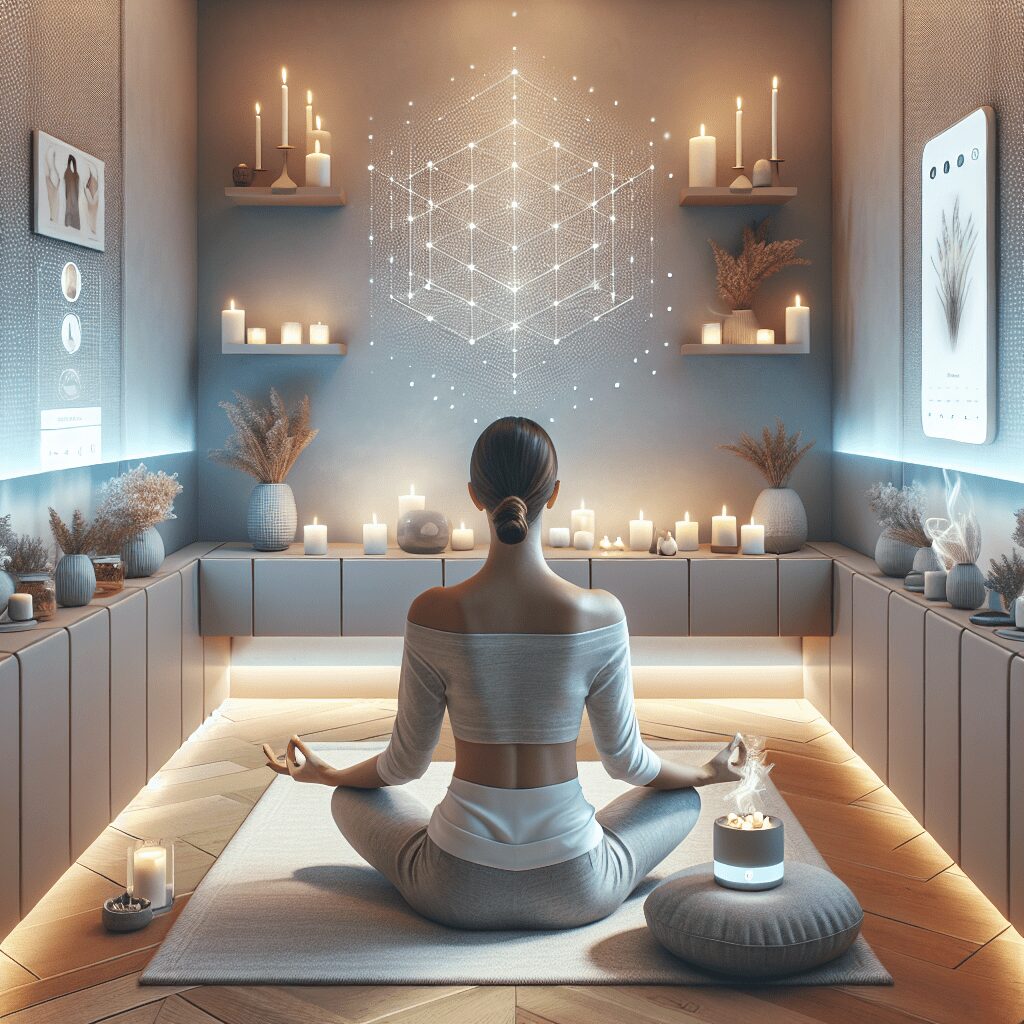
Prioritize your mental well-being daily. Enhance your life by nurturing your mental health with the Smart Meditation app. Break free from stress, alleviate anxiety, and enhance your sleep quality starting today.
How Do You Know When You’ve Reached A Meditative State?
Unlocking the Gateway to Serenity: Understanding the Meditative State
In the whirlwind of our day-to-day lives, finding tranquility can often seem like hunting for a needle in a haystack. Meditation, a practice as ancient as time itself, promises a sliver of peace in the chaos. But as many beginners might ask, “How do you know when you’ve actually hit that sweet spot, the meditative state?” Let’s dive into the signs and signals our mind and body send us, indicating we’ve crossed the threshold into meditation’s calming embrace.
The Tell-Tale Signs of a Meditative State
1. The Vanishing Act of Physical Boundaries
First off, when you’ve successfully entered a meditative state, the acute awareness of your physical self starts to fade away. It’s like you’re there, but not quite. This isn’t some sort of magic trick; rather, it’s your mind transcending physical constraints, leaving behind the weight of stress and tension.
2. A Tranquil Mind is a Happy Mind
Ever had those moments when your brain decides to remind you of every embarrassing thing you’ve ever done, right before bed? Yeah, not during meditation. Achieving a meditative state means your mental merry-go-round slows to a halt. Thoughts might still pop up, but they’re like clouds drifting across the sky of your mind – observed but not engaging.
3. The Inner Silence That Speaks Volumes
It’s not just about quieting the external noise but silencing the inner chatter too. When you reach a meditative state, an enveloping sense of peace and quietude sets in, almost as if someone’s turned down the volume knob on your thoughts. It’s the kind of silence that’s loud in its serenity.
4. The Time Warp Phenomenon
Ever lost track of time while doing something you love? Meditation can feel like that. In a meditative state, the conventional sense of time dissipates. What feels like minutes could be hours. This time dilation is a hallmark of touching base with your inner self, unbound by the tick-tock of the clock.
5. Emotional Equilibrium
The rollercoaster of emotions starts to level out as you float into meditation. It’s not that you’re emotionless; far from it. Rather, you feel a sense of detachment from extreme feelings – viewing them from a distance, with calmness and clarity. This doesn’t mean you won’t feel joy or contentment; these emotions might even be heightened in their purity.
6. The Body’s Whispered Thanks
Let’s not forget the physical sensations; or rather, the lack thereof. Stress-induced tightness? Poof. That annoying ache in your back? Gone. In a meditative state, your body loosens up, thanking you in its language for this moment of repose. It’s as if you’ve pressed the reset button on your physical well-being.
Embarking on the Journey to Inner Peace
Reaching a meditative state is not about forcing your mind into submission. Oh no, it’s more like coaxing a cat into a carrier – it requires patience and a gentle touch. Here are a few quick tips to help you along:
- Find Your Zen Zone: Choose a quiet, comfortable spot where you won’t be disturbed. This is your sanctuary.
- Comfort is Key: Wear something that feels like a second skin. The last thing you want is to be fighting with your waistband.
- Breathwork: Focus on your breathing. Let it be the anchor that keeps you tethered to the present moment.
- Let Go: Release your expectations. Meditation is not a destination but a journey. Enjoy the ride.
In a nutshell, recognizing when you’ve achieved a meditative state can be as clear as day or as subtle as a whisper. It’s not one-size-fits-all; it’s a deeply personal experience. So, next time you sit down to meditate, keep an eye – or rather, an inner eye – out for these signs. Embrace the process, and who knows, you might just find that needle in the haystack after all.





